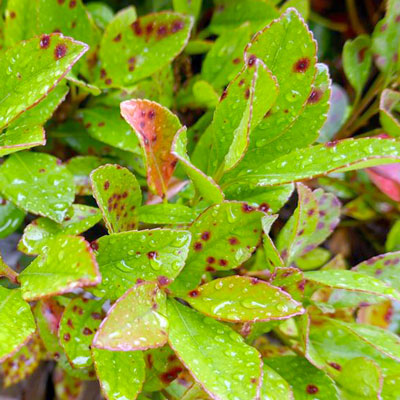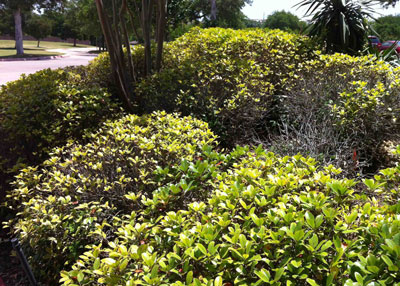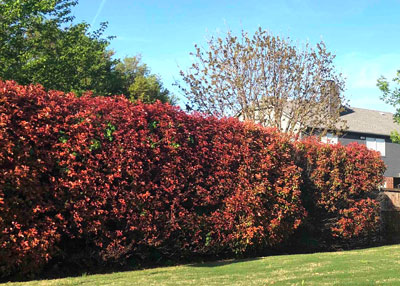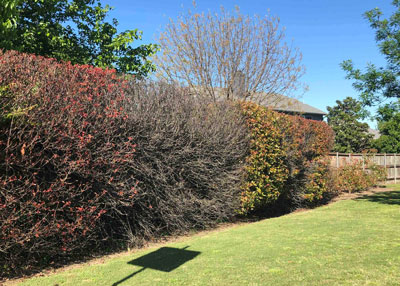Question of the Week – Number 1: May 7, 2020

“What are these spots all over my Indian hawthorn and what can I do to save them?”
This is the fungal leaf spot know unaffectionately as Entomosporium. It began its assault on America’s landscapes when it hit redtip photinias 30 or more years ago, and then it moved on to Indian hawthorns. In recent years it has become very much mainstream there.

Here’s how it develops…
You’ll see this pattern on both types of shrubs:
• Harmless-looking maroon freckles begin to appear on a few leaves at first.
• Within a few months big parts of afflicted plants look like they have the measles.
• The most impacted leaves begin to turn a light green, then yellow and eventually creamy white and then brown and crisp.
• Within a year branches die and within a couple of years the entire shrub dies.

Fungicides do not seem to help in preventing or curing this disease, and there do not seem to be any varieties of Indian hawthorns that are completely resistant to it.
There is no point in replacing dead or dying plants with more of their kind. They will almost immediately become infected with it as well.


• Best replacements for Indian hawthorns in terms of plants that look about the same in terms of height, width and texture would be Carissa hollies. They’re suited to sun or shade. They’re evergreen, and they’re well adapted to all parts of Texas. The only slight down side with them is that they don’t bloom, but Indian hawthorns only bloom for a couple of weeks each year anyway.
• Best replacements for redtip photinias in terms of tall, screening shrubs would be Nellie R. Stevens hollies (10-14 feet tall) spaced 6-8 feet apart or Willowleaf hollies (also known as Needlepoint hollies. 8-12 feet tall) spaced 6 feet apart.
